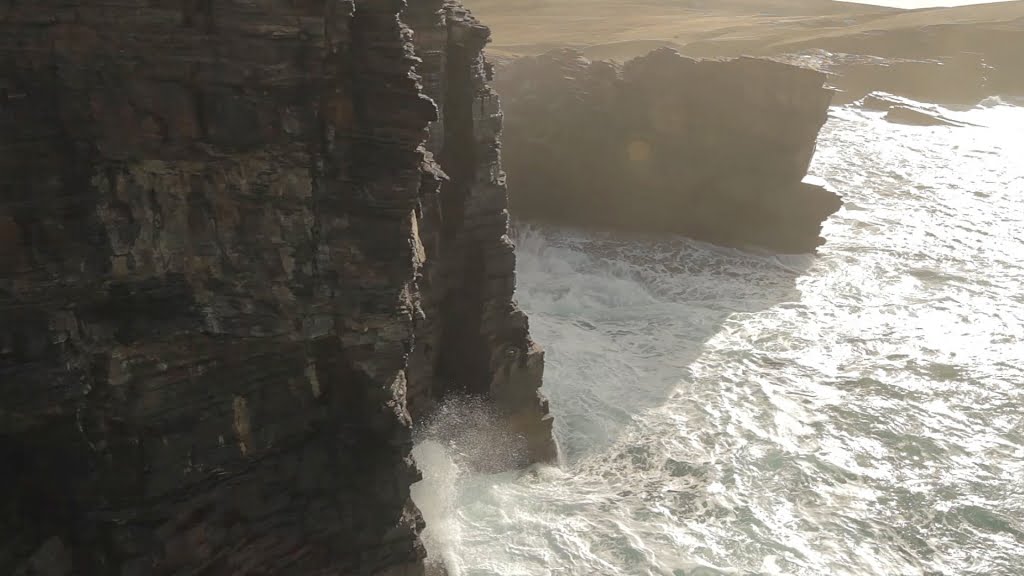Drone Safety: 5 Important Things You Need to Think About

So, you've got a drone, you've got a license, you've booked a gig so what do you need to do now? In this blog, we look at the five most important drone safety considerations you need to have before you think about flying a drone for work. Everyone thinks production location planning is an easy task. You find somewhere perfect and you just send the drone up and go for it, right? Maybe in an ideal world - but this isn’t the case when it comes to flying drones commercially for production. It’s especially true when it comes to selecting a location where a drone can legally fly.
If you are planning to use a drone in your production to get some outstanding shots of the location, or just to add a unique perspective to your footage, here are some crucial things you need to consider before you take to the skies.
Safety first is a good phrase to live by when out on a production. Yes, getting an epic shot or piece of footage is crucial but not if it means sacrificing your drone safety! Let's be clear, drones in the wrong hands are dangerous - but, big BUT right there, drones can be safe and awesome when you have a smart drone operator.
It may seem like a bore or a touch pedantic but an expert drone operator will consider all these things before they set their drone soaring. If you have a drone safety savvy operator you will not only get amazing shots but you won't have to risk your neck for them either.
Image by LA Media
You Must Respect the Drone Danielson!
Take the wise words of Mr. Miyagi to heart! A typical misconception about drones is that they can go anywhere, right? True, to an extent, yes they can physically go most places, drones are very versatile and nimble but unless you want to find yourself in hot water with the law, here are key considerations for drone safety every production manager should consider before the day of the shoot. Just because you can fly it doesn't mean you should!
Cowboy drone operators will risk it, but if the CAA is notified you could find yourself under investigation for reckless flying or worse charged by the police for endangering the public. Drones are a serious piece of machinery, just because some can be bought cheaply as toys you shouldn't lower your guard when operating one as they can do damage.
Do you have production control over the required drone flying area?
The law is quite specific about this and covers people, property, and roads. If you have full control of these elements then you should be good to go flying. Make sure that you get a completed risk assessment form from the drone pilot in advance of your flying date. If you do not have full control then you will need a control method statement from the drone company. All drone flights should be operated within areas that are under the control of the production or which have been made safe using the practices suggested in the control methods statement.
Image by LA Media
Buyer Beware: Is it legal and am I liable?
The drone company should advise you regarding the legal requirements of any flying you intend to undertake and investigate the nature of the airspace you are intending to fly. The drone company should make all relevant contact with CAA, NATS, and any air traffic control (military and civilian) that may be operating in the area you intend to fly and keep you informed regarding any issues.
IMPORTANT: One-man operations will often ask for production assistance when implementing control measures in a flying zone. Be aware that compliance with this request can create an insurance liability to the production.
Cleared for landing?
Does your location have safe landing and take-off areas for the drone operators to use? More importantly, is there an area that can be considered an emergency fly away zone should it be required? The drone company will advise you as to the suitability of any areas you might suggest for these purposes.
Image by LA Media
Best laid plans
Where possible, and affordable, it is advised to take the drone operators out on a location recce with the production Director, DOP, production manager, and health and safety adviser.
Houston, we don’t have a problem!
It is critical when flying the drone that any pilot has ‘Line Of Sight’. They must see the drone clearly at all times when flying, no excuses! So, when considering locations it is important to anticipate any possible obstructions to the pilot's “Line Of Sight’. Obstructions can be as simple as trees, other buildings, a change in the ground levels when flying low and, most commonly, distance from the pilot.
This may seem obvious but it is worth saying, Drones become very small as they fly away from the pilot and even, therefore, become riskier when, and if, the drone disappears into the background they are flying against. Crossing in front of bright sunlight for example will be very challenging for most pilots.
Image by LA Media
Although this may seem a little scary, if you are working with a good and reputable drone operator they will help you through this experience and make it as straightforward as possible. If you keep these 5 key drone safety considerations in mind when picking your location you will avoid some of these easily made mistakes.
Check out the rest of our website to see some of the drone projects we've worked on and if you have any questions e-mail us at louise@lamedia.co.uk or just give us a call on 0131 622 0220.
If you enjoyed this blog don’t forget to follow us on: Twitter, Facebook, and Instagram for your daily dose of media & drone chat!
Wishing you happy and safe flying!




